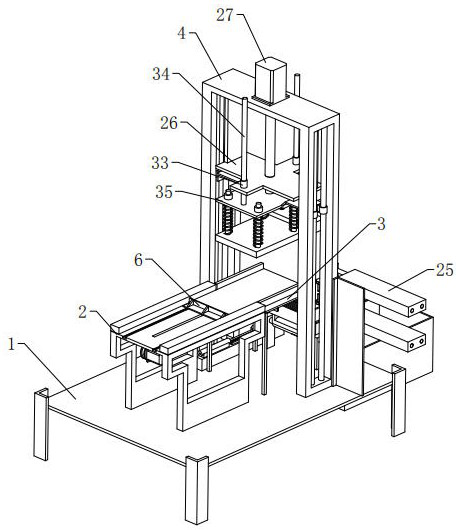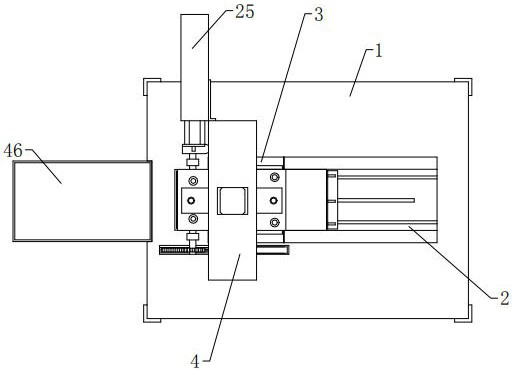Quantitative traceless cutting equipment for glass
A quantitative traceless and cutting equipment technology, applied in glass manufacturing equipment, glass cutting devices, manufacturing tools, etc., can solve the problems of error, small size, and low cost
- Summary
- Abstract
- Description
- Claims
- Application Information
AI Technical Summary
Problems solved by technology
Method used
Image
Examples
Embodiment Construction
[0031] The following description serves to disclose the present invention to enable those skilled in the art to carry out the present invention. The preferred embodiments described below are only examples, and those skilled in the art can devise other obvious variations.
[0032] refer to Figure 1 to Figure 13 As shown, a quantitative non-mark cutting equipment for glass, including a processing table 1, a conveying table 2, a cutting table 3, a gantry frame 4, a scratching mechanism, a quantitative pushing mechanism, a positioning mechanism, a pressing mechanism and a waste collection Mechanism, the conveying table 2 is set on the top of the processing table 1, the top of the conveying table 2 is provided with a slideway 5 for glass movement, the cutting table 3 is arranged at the end of the conveying table 2, the gantry frame 4 is located above the cutting table 3, and the gantry The two ends of the frame 4 are respectively connected to the top of the processing table 1, an...
PUM
 Login to View More
Login to View More Abstract
Description
Claims
Application Information
 Login to View More
Login to View More - R&D
- Intellectual Property
- Life Sciences
- Materials
- Tech Scout
- Unparalleled Data Quality
- Higher Quality Content
- 60% Fewer Hallucinations
Browse by: Latest US Patents, China's latest patents, Technical Efficacy Thesaurus, Application Domain, Technology Topic, Popular Technical Reports.
© 2025 PatSnap. All rights reserved.Legal|Privacy policy|Modern Slavery Act Transparency Statement|Sitemap|About US| Contact US: help@patsnap.com



